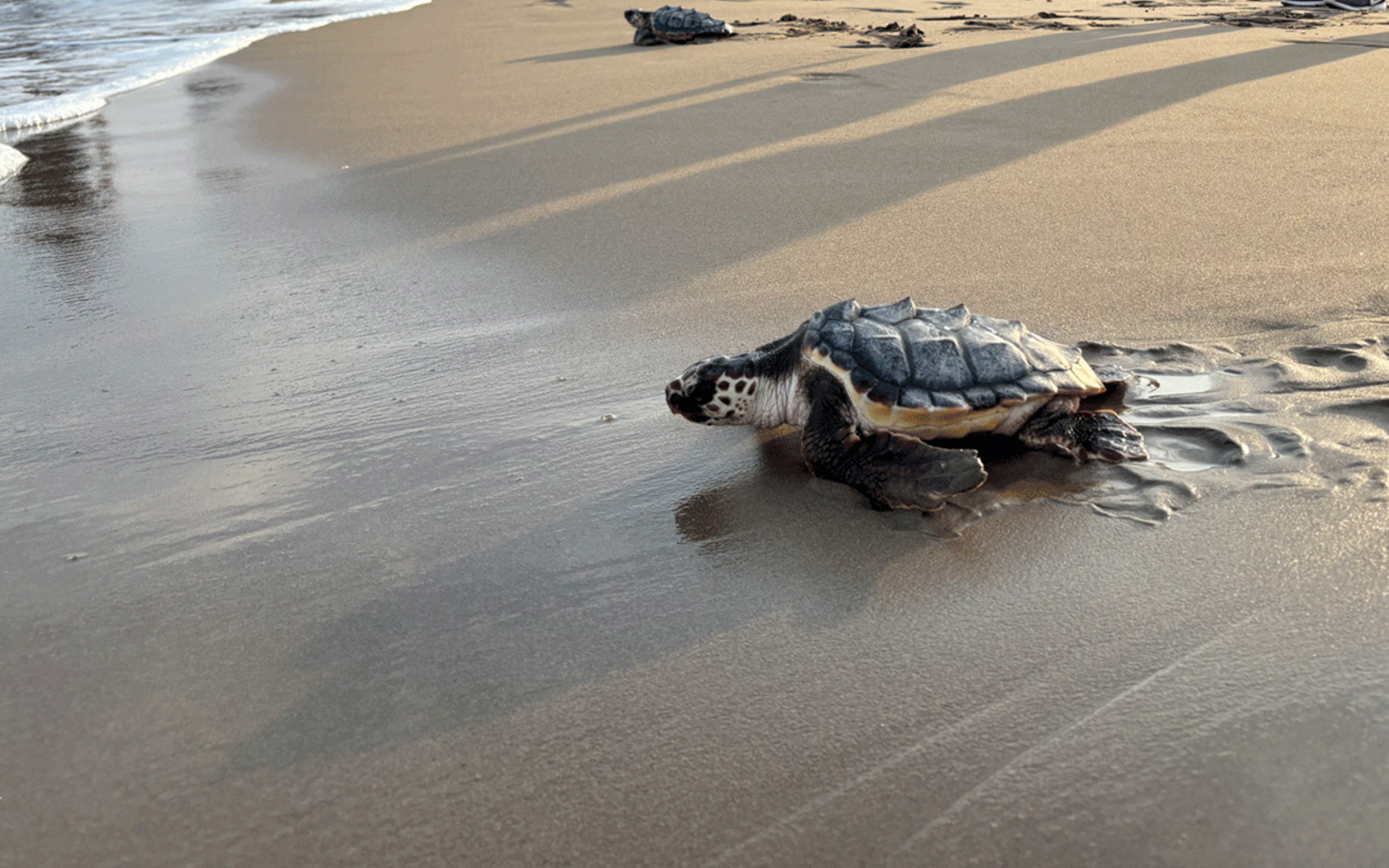On the occasion of World Sea Turtle Day we spoke with Montse Pal, communications manager at the CRAM Foundation (Foundation for the Conservation and Recovery of Marine Animals).
In general, we know relatively little about sea turtles, but behind each of them there is a fascinating journey: they have navigated the Earth’s oceans for the last 110 million years. They are very important for the preservation of marine ecosystems, and yet thousands of them are disappearing due to accidental fishing.
What are the activities and objectives of CRAM?
The CRAM Foundation is a non-profit private entity dedicated to the protection of the marine environment and the species that inhabit it. Its lines of action are the care and rescue of marine fauna, research and conservation of marine species and ecosystems, and awareness in favor of the conservation of our seas and oceans.
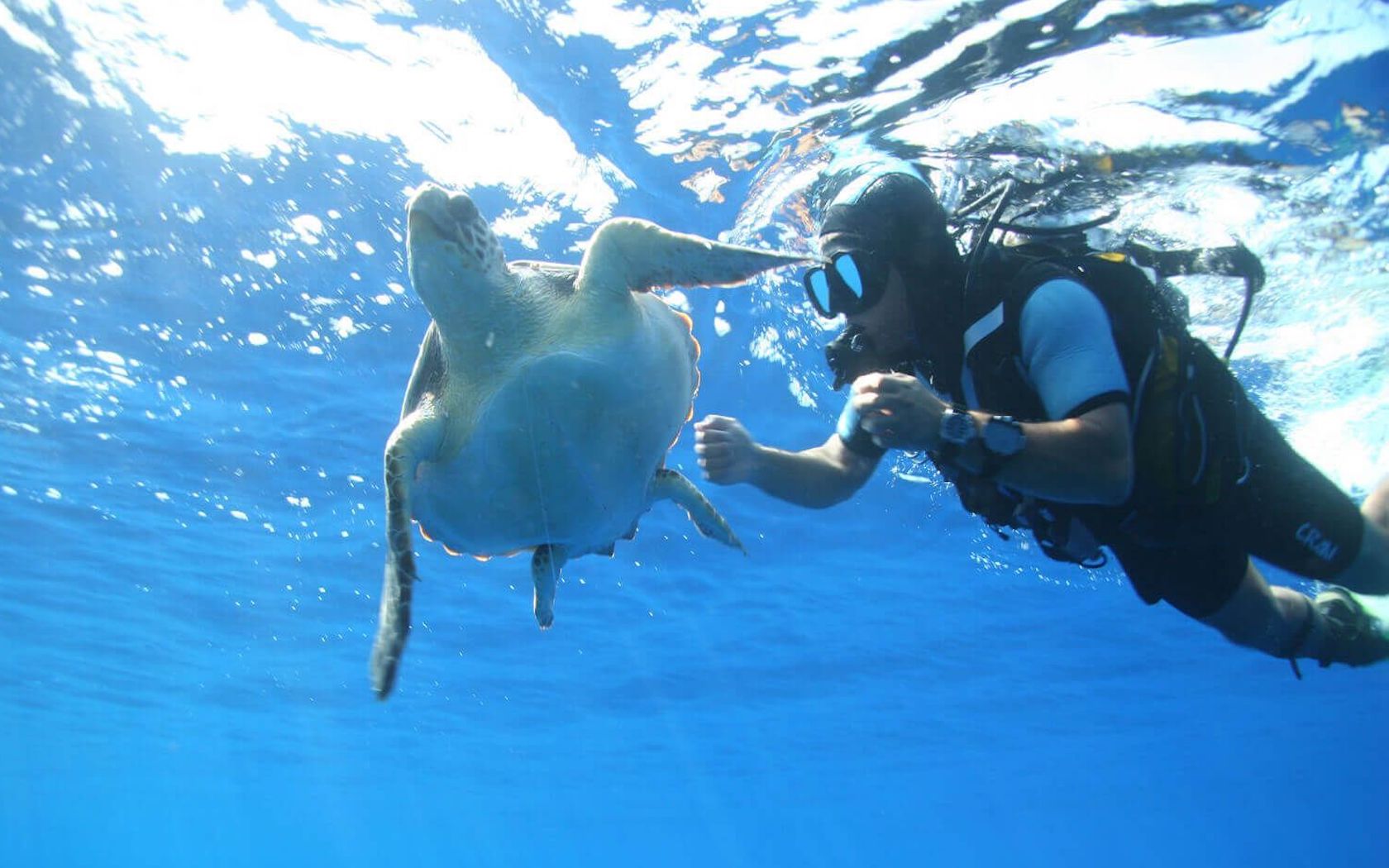
Editorial credit: CRAM.
CRAM has a state-of-the-art recovery center and a technical and human team specially prepared for assisting marine species. In addition, it has the Vell Marí, one of the few scientific sailboats dedicated to the exploration of the marine environment.
The objectives of the CRAM Foundation are mainly three. On the one hand, develop knowledge of diseases and clinical care in threatened marine species using techniques that are not invasive or painful, in a framework of respect for the individual and with the objective of reintroducing it into its natural environment as soon as possible. Secondly, develop and promote research projects, in combination with scientific and university groups, in order to find solutions to the regression of Mediterranean populations.
Finally, through the different communication tools, generate awareness and education aimed at all social spheres to promote the conservation of the marine environment.
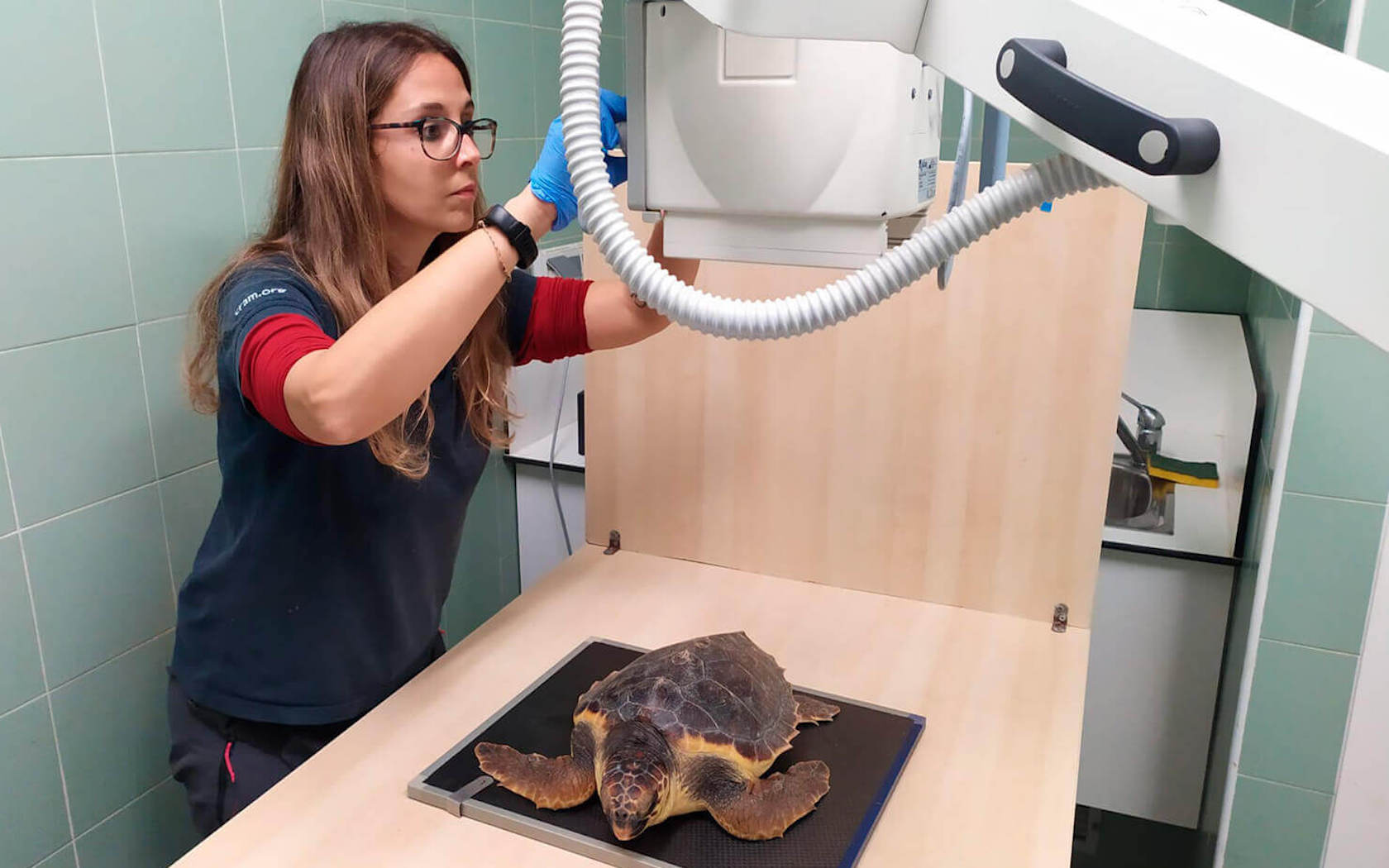
Editorial credit: CRAM.
If we talk about results between 1994 and 2023, we can highlight the following:
- Assistance to more than 1,200 sea turtles
- Assistance to more than 650 living cetaceans stranded on the beach
- Assistance to more than 240 seabirds
- The realization of more than 50 scientific projects
- The participation of more than 420,000 people in our activities
educational at the Recovery Center - The participation of more than 2,700 people in our program of
volunteering
Where and how do sea turtles come from?
The CRAM Foundation, through its SERVIMAR project, is responsible for the rescue and recovery of threatened marine species that arrive on the Catalan coast. For this, it has a leading recovery center, a rescue vehicle and a human technical team available 24 hours a day, 365 days a year, which allows for an immediate and permanent response system to be maintained.
Between 1994 and 2023, the CRAM has assisted more than 1,200 sea turtles.
The main threat to sea turtles is the fishing interaction and it is the main reason why these animals enter the Recovery Center of the CRAM Foundation. Under the “Fishermen in favor of the sea” campaign, CRAM technicians carry out fisheries awareness campaigns with the objective of minimizing the impact that fishing has on these animals, making fishermen the first agents involved in the recovery process of these animals, since they are the first to detect accidental capture and the ones responsible for activating the rescue protocol.
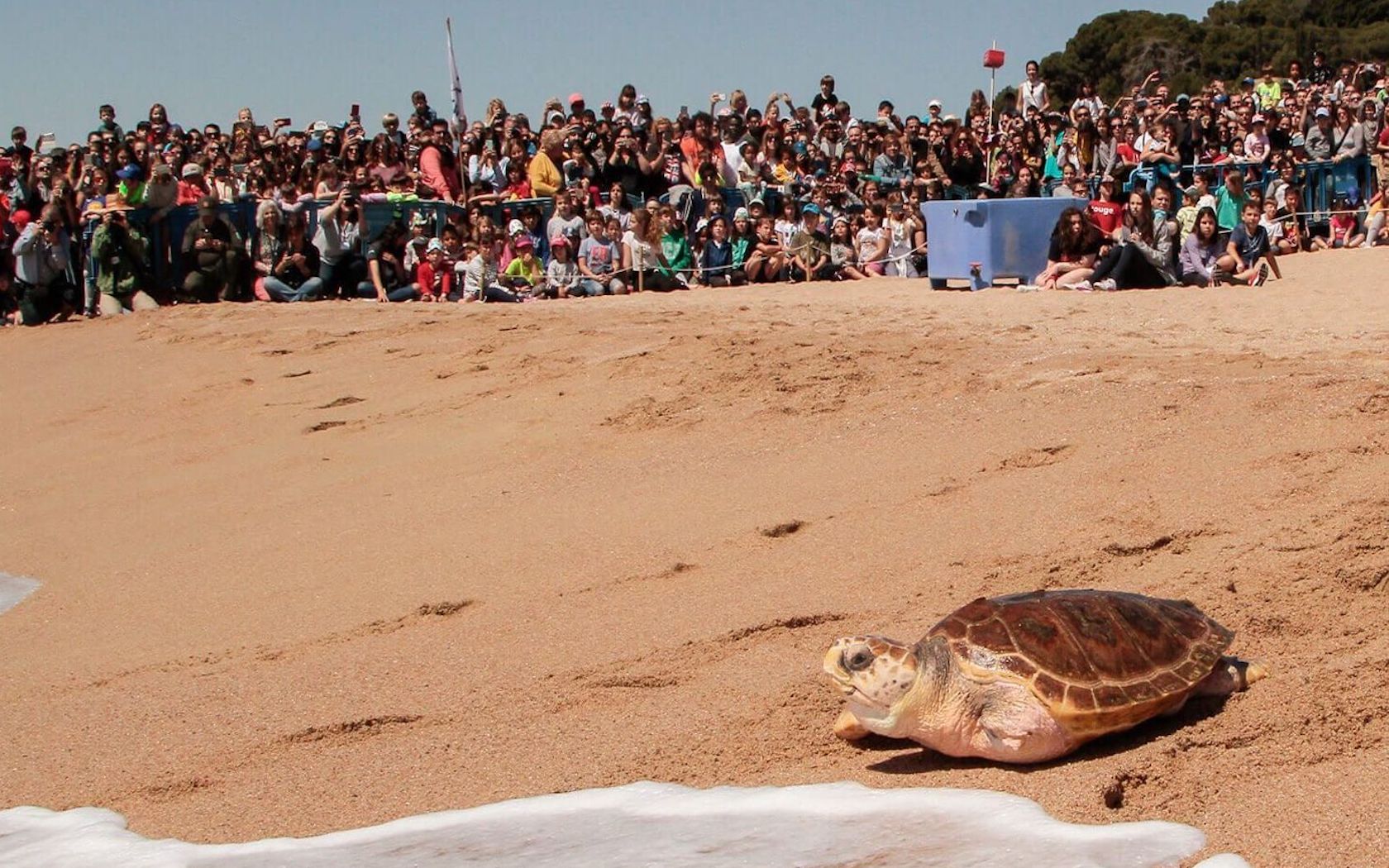
Editorial credit: CRAM.
What are the most common injuries and diseases of turtles that arrive at the center?
The main disease is gas embolism, a disease that can be caused by fishing interaction (specifically by trawling), and for which we have a hyperbaric chamber in the center, designed exclusively for sea turtles, which allows to treat this pathology and reduce the turtle’s recovery time.
Another problem we often encounter is the intake of plastics. Although it is not the reason why the turtle enters the center, it is very common for turtles to expel plastic in their first weeks of entry. In 2023, 85% of the turtles that entered the center had macroplastics both in feces and in the digestive tract.
Other problems we encounter are entanglements with abandoned nets (which can cause them to lose an extremity) or collisions with boats.
CRAM technicians carry out fisheries awareness campaigns with the objective of minimizing the impact that fishing has on these animals.
What would be the treatment process for an injured turtle?
The process begins with the notice of a turtle captured, badly injured or stranded on the beach. We move as far as needed anywhere on the Catalan coast. The turtle is taken to our Recovery Center in El Prat de Llobregat, where a first emergency assessment is carried out: visual examination, X-rays, blood analysis… Depending on the injury, personalized treatment begins until complete recovery.
The animal will remain in the turtle ICU, and once it is stable it will move to the recovery fenced area, where it will have more space to acclimatize. Finally it will be reintroduced into the sea.
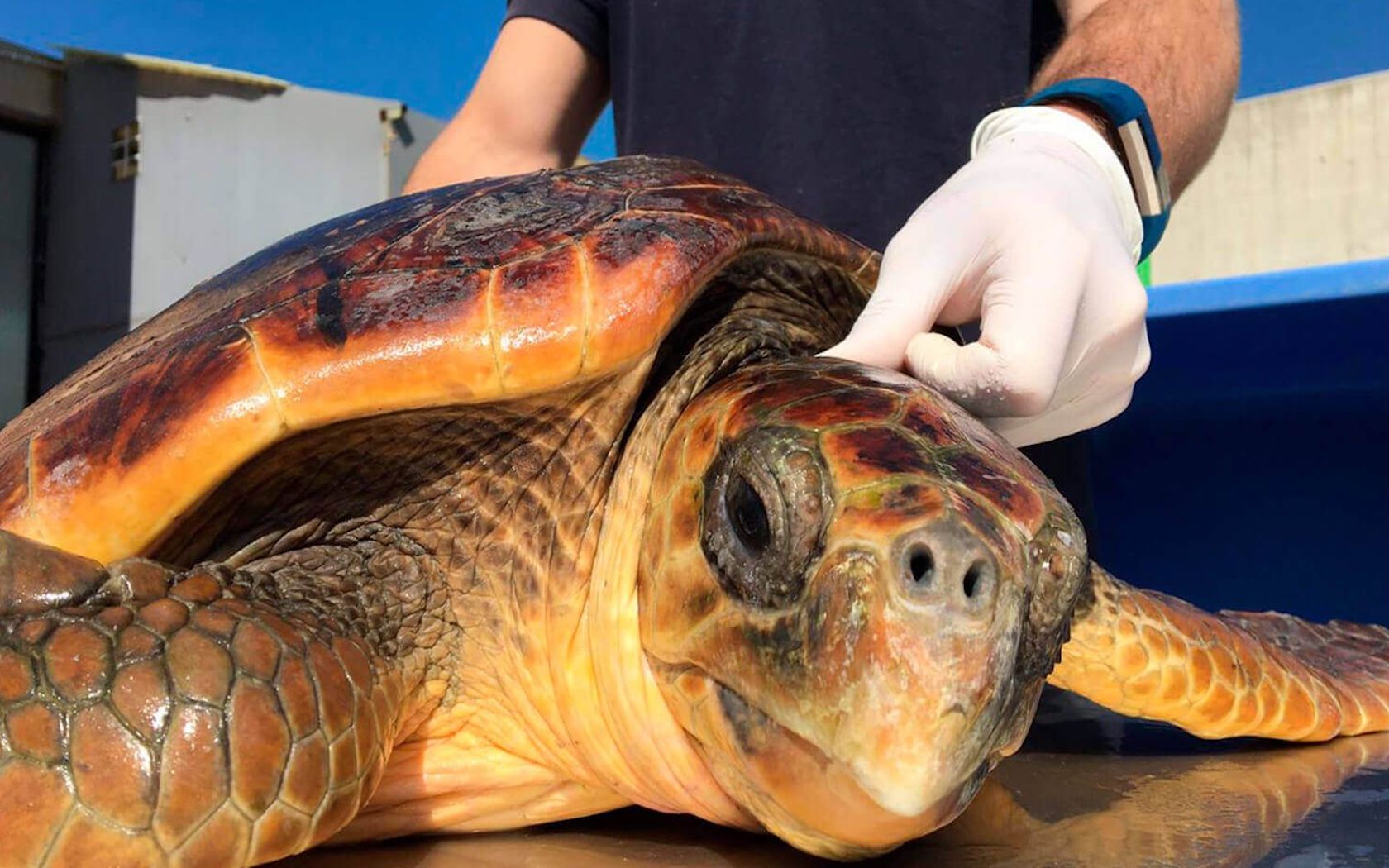
Editorial credit: CRAM.
What can we do to protect these turtles in their habitat?
Only by knowing can we love, and only by loving can we protect. To this day, there is still a great ignorance of the existence of these animals in the Mediterranean Sea. This is very rich in biodiversity, since we find 3 species of sea turtles (bobo, green and leatherback), but at the same time it is very threatened.
Whenever we encounter an animal, whether alive or dead, stuck in the sand or with some problem at sea, it is very important to immediately call 112, the emergency telephone number, and thus activate the rescue protocol. We will never touch the animal, or try to reintroduce it, and we will maintain a safe and silent distance until the CRAM Foundation technicians arrive (in the case of Catalonia).
Only by knowing can we love, and only by loving can we protect.
What do the volunteers do in the CRAM?
The CRAM would not exist without the altruistic help of hundreds of volunteers who participate in the defense of the sea and endangered species. With them, we make our work more effective and reach where our resources don’t reach.The volunteering mainly helps the Clinical and Rescue Area, and its tasks are very related to the conservation of the loggerhead turtle. They control the temperatures of the fences, prepare the food, clean the fences…
Getting involved in the conservation of the marine environment is an indispensable part of our philosophy, and that’s why your selfless participation in our activities and lines of action is very important to us.
Could you share a story about a turtle you have treated?
I am not part of the veterinary team of the Clinical and Rescue Area, but I can share the story of a turtle that left a deep impression on me: the Bernarda turtle. An animal that showed us from the first moment its desire to live and recover, and that thanks to the efforts of the CRAM staff and volunteers could be reintroduced into the natural environment.
